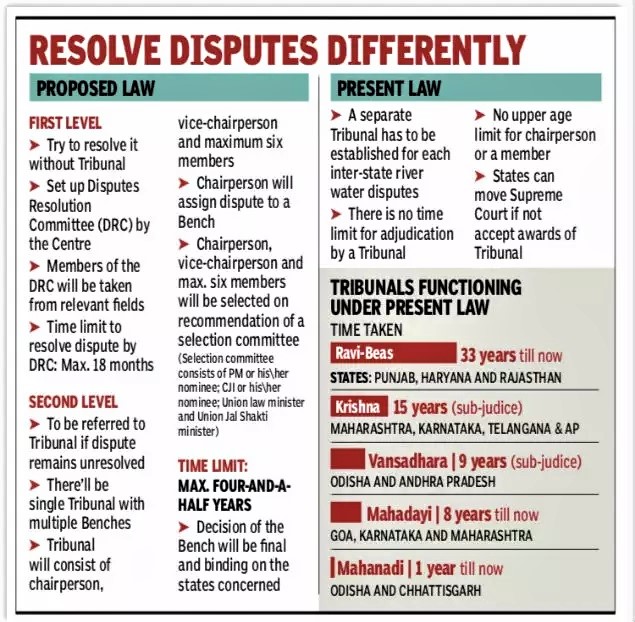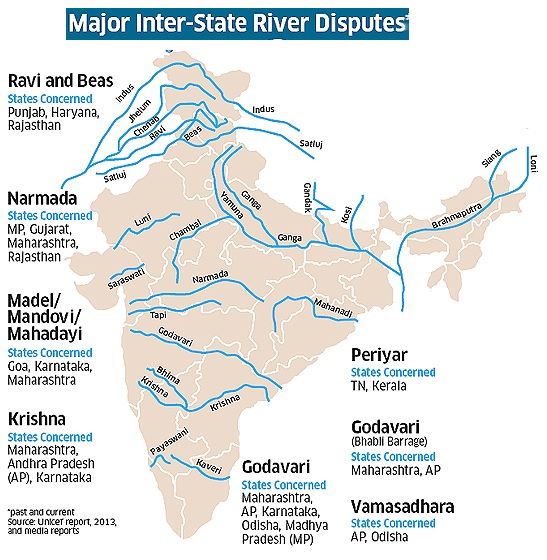7667766266
enquiry@shankarias.in
Recently, Delhi Chief Minister urged Prime Minister Narendra Modi to solve the long-pending Sutlej-Yamuna Link Canal issue between Punjab and Haryana.
|
Water: Union List |
Water: State List |
|
|
The Centre has listed 111 inland rivers as National Waterways in The National Waterways Bill, 2015, empowering it to create laws on shipping and travel on the listed waterways.
Inter-State River Water Dispute Act, 1956
2019 Amendment Bill


The right to clean drinking water has been read into the right to life under Article 21 of the constitution.
References
Quick facts
National Mission for Clean Ganga (NMCG)